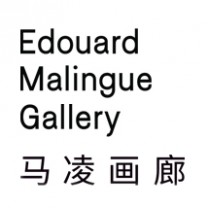- 资质:
- 评分:
1分 2分 3分 4分 5分 6分 7分 8分 9分 10分 2.5分
- 印象:
- 经营时间:15年
- 展厅面积:4000平米
- 地 区:香港
杰里米艾弗雷特与他的“埋藏画作”
2015-01-23 12:38:56 来源:PRESTAGE杂志
Born and raised in colorado, Jeremy everett is a highly celebrated emerging artist. With a degree in Landscape Architecture, he can teach us something about how to see objects in relation to space, environment, and the visual physical experience. He buries pictures in the ground during his travels. After certain periods of time, he digs them up. This process helps him make what he calls decay drawings. He wants us to know what decay and dissection does to our poetry of reality. It’s a twisted concept, yet it brings clarity and straddles the line between disorder and decay, order and beauty. Indeed, it’s the perfection of the defected.
Where did you study? “I studied Architecture and Landscape in Colorado and went to graduate school with Bruce Mau in Toronto. I actually dropped out of both schools but somehow still graduated from each one, because both of them thought I was at the other school finishing my credits, but in reality I had moved to Los Angeles to start my own studio work.”
What was the first piece you ever made? “The buried sky photographs were my first real work. I created them after I had left graduate school in 2008. I grew up in the West, which was surrounded by unfinished landscapes: piles of material lay waiting, buildings were half finished and forgotten. I wanted to draw evidence of this place that has no past and no future so I buried the sky, the landmarks, and the figures that surrounded me, and developed a vocabulary of mark making and color reduction. Through these works I could confront my visual history without any aesthetic or sensation.”
You are known for working with a variety of natural and land-art processes. Can you tell me about it? “I was recently driving from LA to Colorado and decided to find Michael Heizers: Double Negative outside of Las Vegas. It’s a piece that has a huge influence on me but I’ve only seen it in pictures. Unfortunately I only had a rental van that was terrible on the rough dirt roads (no 4 wheel drive) and the sculpture is very remote and there is no way to access it. I was very determined to find it until all of a sudden, 8 miles from the highway, I launched my rental van into a dry riverbed full of sand. Totally buried, nose first, with no way of digging it out except with a snowbrush. There was no tree, no rope, no shovel and no cell phone reception. I even tried making levers under the tire with small stones. I tried everything to dig it out but it was impossible. Right at that moment I had the same feeling I had when I saw the photo of double negative for the first time. A complete silent surrender and a feeling of vulnerability to something I can’t describe. It was a very powerful moment.”
Why and where do you bury drawings? Can you tell me about the ‘decay drawings’? “The use of decay as a drawing tool was a way for me to deconstruct photography and the meaning of a particular image. The soil naturally starts reducing the color of a photographic print into fantastic acid tones and decomposing the image in a very painterly way. They started as quick studies but quickly became very fine-tuned. I did a lot of experimentation with soil types, the amount of water and the length of time they were buried. It was very similar to an artist using the ‘right’ kind of paint. Once that was dialed in I was able to produce them on an agricultural grid, bury them in the morning, go to work and then dig them up at night. It was very rewarding to produce so much work and it also helped me learn to edit. I was so excited that I sent hundreds of rolls of film to the lab, images ranging from cheerleaders to the empire state building. I’ve buried a number of decay drawings in California, Colorado, New York, Paris, and Berlin. I bury them when I travel to these places and dig them up whenever I return. It’s a way of confronting time, which also provides me with ideas for the paintings that I’m working on in the studio. Burying images in the ground lets me explore a different kind of abstraction and a different visual vocabulary — through the removal of an image and the reduction of the colors. It’s also a way of forgetting what I know, and to reach towards a kind of drawing composition that can never be repeated.”
Has it ever happened that you couldn’t find your buried drawings? “Yes I tried to bury the Louvre in France, but it was always tricky because the French really pay close attention to people doing abnormal things – for instance burying photographs in their garden. So lots of those are still out there.”
You’re interested in natural chemical processes and in finding ways to harness them to create richly textured works of art. Where does that interest come from? “I’m not interested in chemicals but I’m interested in natural processes and a lot of those interests are very specific and an intentional part of the work. For example: For a show I did a series about young Californian artists using Borax, which is a natural material mined in Southern California and commonly used in laundry detergent. I figured out that you could supersaturate a solution with borax and grow crystals on basically anything. So I went and bought three hustler magazines, another product of Southern California, and put them in a bath of Borax until they became beautiful color-coded growths of crystal. The Smithsonian later included these works in a feature on new forms of photography. That specific way of working and using physical properties similar to how basic photographic processes work are very interesting to me.”
Can you tell me about the Death Valley Vacuum? “On a scorching afternoon in 2009, I drove to Death Valley in California, with the intense heat bearing down on the desert, which at 282 feet below sea level, is the lowest point in North America. I became interested in the pressure of this place and switched on a high-speed vacuum and hovered the endless sand; four minutes later, the machine blew up. It was very quick and effective. I was alone, the camera fixed on the hood of my car. The entire film is about 4 min, but I lost the tape when I moved to NYC so I only have two film stills left of the piece, which I find more interesting than the entire film. I still love that piece so much I might reshoot it.”
Do you know in advance how the outcome will look like or does it surprise you? “In the beginning it’s unpredictable until I figure out how to get what I want, then you strike it hot. Editing is just as important as production.”
Who are the artists that fascinate you most? “All of them and especially the Mono Ha group.”
What are you working on now? “My first book that will be published with my show at the Edouard Malingue gallery in Hong Kong in July this summer (2014). I also started to work on two site-specific commissions for next year.”
上一篇:梦境与记忆——崔新明的艺术现实
下一篇:访谈马凌画廊新空间

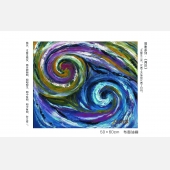 庞明璇
庞明璇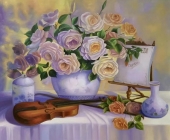 未知
未知 张大千
张大千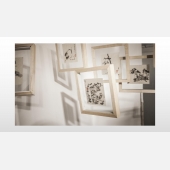 范学宜
范学宜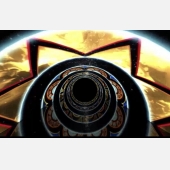 钟飚
钟飚